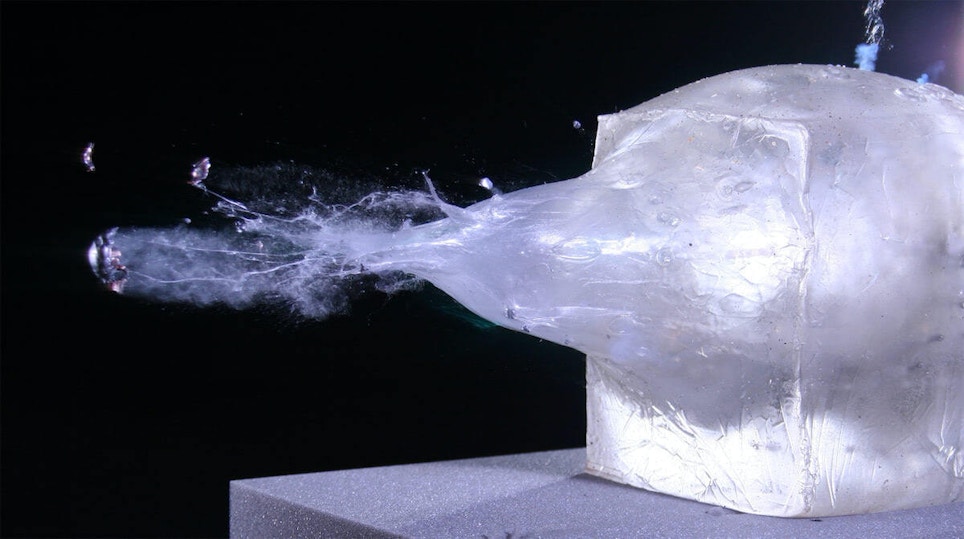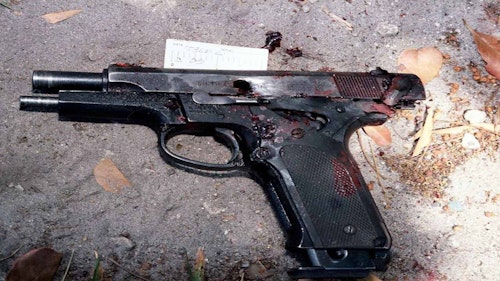What is the perfect caliber? It’s a question often asked by new gun buyers and debated by those with decades of shooting experience. Some argue that high-velocity projectiles are the deciding factor. Others half-jokingly reply that size matters, and many believe both are important and that perfection lies somewhere between these extremes. So, how do you answer the unanswerable question for your customers?
Tell a Story
In early 1986, Dade County, Florida, experienced a rash of bank and armored car robberies involving two unknown suspects. The pair shot one armed guard in the leg with a shotgun during one robbery. In a separate incident, they shot another guard in the back with a shotgun and a .223 rifle. They were obviously a significant risk to the public. The FBI would later learn that they had also shot two civilians and then stolen their cars to use as getaway vehicles.
The local FBI office responded by creating a task force and organizing a stakeout of banks they thought would likely be the robbers’ next target. The squad included 14 agents in 11 different vehicles. Their guess was correct. On April 11th, the robbers were spotted driving a car stolen from one of the civilian shooting victims. It was the same car they had used in previous robberies. Eight of the 14 agents got on-scene before the suspects realized they were being followed. The two suspects tried to evade capture and appeared to be heading back to a heavily populated area. The decision was made to stop them before all the agents arrived. They wanted to limit the danger as much as possible. The lead car forced the suspect vehicle off the road in a felony car stop. What followed was an epic gun battle between the eight agents and the two well-armed and practiced suspects, Michael Lee Platt and William Russell Mattox.
The FBI had the advantage of numbers. The robbers had the benefit of more firepower. The weapons used by the FBI included three S&W model 459 semi-auto pistols in 9mm, five S&W revolvers loaded with .38 Special +P, and a Remington 870 loaded with 12-gauge 00 Buckshot. The robbers were armed with two 357 revolvers, a S&W model 3000 shotgun loaded with #6 shot, and a Ruger Mini-14 in .223 Remington. The gun battle raged for more than five minutes and resulted in the death of both criminals but not before one of them, Michael Platt, took the lives of two agents and severely wounded five more.
The post-incident investigation revealed that the wound which finally led to the death of Michael Platt and the cessation of hostilities had been fired by Agent Jerry Dove early in the battle. It is believed to have been one of the first shots fired. The 9mm round went through Platt’s upper arm and entered his chest. It traveled through his lung and stopped an inch from his heart. The shot placement was perfect and, in all expert opinions, should have ended the fight. But unfortunately, Platt didn’t stop.
How to Stop a Gun Battle
There are two certain ways to stop hostilities: Disrupt the central nervous system to the point where it is unable to function or cause enough massive injuries that there isn’t enough blood left in the body to sustain consciousness. Accomplishing either requires that bullets can penetrate deep enough in the body or that the wound cavity is large enough to significantly damage the spine or major organs.
There’s a third factor at play, and that’s shot placement. A deadly force encounter will likely end when one of the first two factors intersects with the third. In other words, the first two are essential, but shot placement is critical. Agent Dove’s aim was perfect, and its failure to end the battle was blamed on the ammunition’s inability to penetrate. It didn’t cause enough trauma to end the fight.
Caliber Choices
The FBI’s Firearms Training Unit was already testing ammunition as part of their study to find the perfect handgun and ammo to use when the agency transitioned from revolvers to semi-autos. The two calibers being tested were the 9mm and the .45ACP. This was the first step toward a decision about ammunition choice. Meanwhile, a separate study looked at the new 10mm cartridge to see if it might be practical for law enforcement. Public pressure forced the FBI to add the 10MM cartridge for consideration. It’s a much more powerful cartridge than the 9mm and the .45, and its diameter falls midway between them.
The 10mm proved superior to the other calibers in important areas. It had more power, deeper penetration, worked well through barriers, and was the most accurate of the three calibers tested. However, increasing power always comes at a cost.
Three factors made the agency decide against the 10mm. First, there were limited firearms in the new caliber. Second, the length of the cartridge required a much larger grip to accommodate the magazines. Third, and the most critical of the three, was the excessive recoil the cartridge generated. Most agents found it too hot to shoot accurately. Police combat accuracy with existing cartridges has consistently held in the 20-30% range. The increased recoil threatened to make those numbers worse. Someone finally asked the right question: Is it better to have five or six accurate hits with a less powerful but adequate round or one or two with the 10mm?
The Firearms Training Unit in Quantico, impressed with the performance of the 10mm, decided to experiment. They downloaded the cartridge to match the lower velocities of the 9mm and .45, which solved the issue of excessive recoil. They then realized that these new loads didn’t require the longer case of the 10mm, so they shortened it. The result created the basis of the .40 S&W. The shorter case length went on to solve the other two problems. The new cartridge would fit in the same size frame as a 9mm, opening many possibilities with existing gun designs. The smaller frame also made it easier for agents with smaller hands. They had found a winner. The FBI and law enforcement agencies nationwide reacted enthusiastically, eventually adopting the .40 S&W and making it a significant player within the law enforcement community. It became one of the most popular cartridges for police and civilians and is still popular today.
Lessons Learned
Caliber selection isn’t a black-and-white issue. Rather than thinking of which is best, a more productive approach, as the FBI studies proved, would be to view the decision as a balancing act. The manageable recoil of a .22LR makes accuracy easy. The power of the 10mm provides excellent penetration. The question comes back to the main objective of stopping violence as soon as possible and the three prime factors that accomplish it: penetration, wound cavity, and shot placement. The first two are critical but mean nothing without the third. So, the question then becomes one of customer ability.
But even this standard has variables. Handgun design and fitment affect controllability. A customer may not be able to shoot accurately with 9mm, .45, or 10mm using one handgun yet have no problem with a different one. Fortunately, there are no shortages when it comes to handgun choices. Newer, more ergonomic designs reduce felt recoil for most people. This becomes another factor in the caliber balancing act.
I witnessed one gun store employee answer the caliber question by bringing two guns. A 50-caliber Desert Eagle was placed alongside a Bond Arms .22LR derringer. He urged the customer to handle each and choose which would be better for self-defense. The customer chose neither of them. He wanted something in between the two — powerful but concealable. That allowed the salesman to open the conversation about the balancing act.
Back to the Original Question
The proper response when a customer asks about the perfect choice of caliber is to answer their unanswerable question with your own question — perfect for whom and for what purpose? Some people can handle 10mm with ease. Others are more recoil sensitive. Some environments have people wearing multiple layers of thick clothing making penetration more critical. It’s all about what the customer needs and what they can use accurately. This is where the balancing act comes into play. They need the most powerful cartridge and gun combination that they can shoot accurately.
The good news is that cartridge development has continued. Today’s bullets are vastly improved over what was available to Agent Dove and his companions. Cartridge selection is less of a limiting factor than it used to be. Most choices over .380ACP provide improved performance not previously possible. As a result, the FBI has recently reverted to the 9mm, because it can now match the .40’s performance while also allowing more rounds per magazine. Discuss the importance of accuracy and how critical it is to stop a violent encounter. Then talk to them about which cartridges and guns will allow them to confidently achieve that accuracy.








